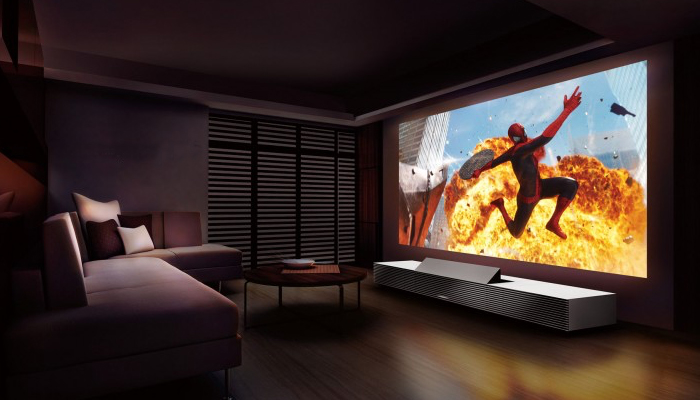Projectors and screens were once the pinnacle of the AV industry. Today, in a time when bigger, brighter, sharper, flat-panel televisions are dominating the current market trends, projectors and screens have taken a back seat, but they still dominate the high-end home theater market.
So, what exactly do you need to know when choosing a projector and screen in 2017? Let’s explore.
Style
There are basically only two different styles of screens: fixed and retractable. A fixed screen stays on the wall all the time in a solid frame that has the screen material attached to it. It stretches to the frame, usually attaching by snaps, though sometimes it uses a hook-and-loop system.
Motorized screens definitely serve a purpose in the non-dedicated room and can be a great problem solver. When choosing a retractable screen, you’ll have some different case and mounting options; do you want it to be mounted to the wall, to the ceiling, recessed into a soffit or attic? Also, are you going to go with a motorized screen? You’ll have to make those decisions based on your room, needs and budget.
Size
The most popular screen sizes are between 100 – 120-inches diagonal as they give a real cinematic experience, fit into most rooms and seating distances, and won’t overwhelm most projectors.
When it comes to understanding projector light output, you are going to read terms like lumens – the amount of light coming out of the projector – and footlamberts (ft-L) – the measure of light that comes off the screen.
Shape
While there are multiple aspect ratios – 4×3, 1.77:1, 1.85:1, 2.35:1, 2.40:1 – there are basically only two aspects – or screen shapes – that you need to worry about: 16×9 or 2.40:1. (While 2.35:1 is also popular, it seems that the industry is moving to 2.40:1, and in reality, they are very close in size/shape.)
Deciding which aspect is right for you will depend primarily on what you watch the most. If you mostly watch TV, sports or play video games, then you will want to go with a 16×9 screen. That way the full screen area will be entirely filled with an image the majority of time. However, if movies – like movies on Blu-ray – are your thing, then a widescreen, cinemascope 2.40:1 aspect screen will allow you to enjoy the biggest image possible.
Screen Material
When choosing the proper material for your projector, the two principal things you’ll want to keep in mind are color and gain. Additionally, you might also need to consider acoustic transparency, and and maybe something special for your 3D needs.
Acoustically Transparent
If you ever get up close to a commercial movie screen you’ll likely notice many little tiny holes in the screen called perforations, or perfs. These perfs allow the sound to pass through the screen. If you want to recreate this experience at home, then you’ll need what is called an acoustically transparent screen.
3D
If you just have a regular projector that does 3D – as in you have only one projector, not two – you won’t need to have a special screen to enjoy 3D. However, if you are lucky enough to have a dual-projection system for 3D – a separate projector for both left eye and right eye like Runco’s d-73D – then you will need a special material that retains the polarization needed to achieve the 3D effect.
Have Questions
AHT Residential has designed award winning home theaters since 1996. If you have a question or need advice on which solution are best for your home theater needs, contact one of our design specialists today!
Request a Consultation




